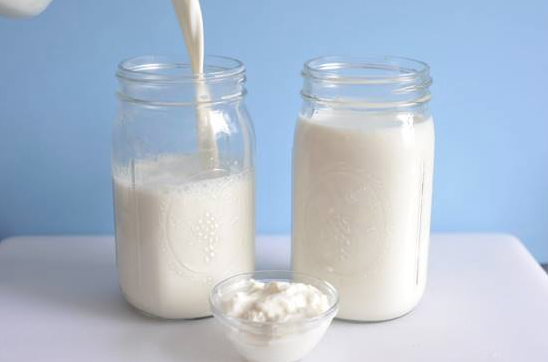UNITED STATES—Fermented foods, such as sauerkraut and kimchi, may often be avoided because of their strong tastes or unusual smells. While I grew up eating kimchi, a spicy Korean side dish made of vegetables, I steered clear of other fermented foods, finding them to be overpowering. Plain yogurt was too tart. Sauerkraut was too sour. The purpose of kombucha was unclear. I was under the impression that fermentation was merely a form of food preservation.
Then I noticed that an increasing number of people were beginning to drink kombucha, touting their benefits on social media and even making their own at home. Products such as kefir, a cultured milk drink similar to yogurt, emerged on the refrigerated shelves at the markets. I tried them, enjoyed them far more than I expected, and decided to dig deeper into the world of fermented foods.
What Fermentation Involves
Fermentation is the process during which some of the carbohydrates and proteins in food products are converted to produce healthy flora and bacteria, also known as probiotics. These bacteria help improve digestion and absorption of nutrients from the food and protect against pathogenic factors such as E. coli. Food writer Sandor Katz states in his book, “The Art of Fermentation,” that the process “pre-digests foods, making nutrients more bioavailable, or easier for the body to absorb.” According to Katz, fermentation can generate additional nutrients in the body. Beneficial enzymes, vitamins, and Omega-3 fatty acids may also be created. Vegetables such as carrots or onions, which already contain many nutrients, gain additional benefits through fermentation.
Further, a study conducted in 2011 revealed that fermented milk products can decrease the risk of cardiovascular disease. Another study published in the Nutrition Journal in 2013 showed that fermented milk may improve glucose metabolism associated with muscle damage after exercise.
Popular Fermented Food Products
Fermented foods have gained popularity over the past few years, after their health benefits became more widely known. These suggestions, including some of the foods mentioned earlier, may help you experience these benefits. They can be made in the comfort of your kitchen, as well.
Kefir is a fermented milk drink that is similar to yogurt. Tart and refreshing, it has probiotics and beneficial yeast. Kefir is made from gelatinous particles called “grains,” which are a combination of bacteria and yeast with milk proteins and complex sugars. The grains are responsible for fermenting the milk.
Kimchi is a traditional Korean dish that is commonly made with fermented cabbage or radish. It is seasoned with “gochutgaru,” or chili powder, “jeotgal,” or salted seafood, and ginger, scallions, and garlic. Kimchi is believed to improve digestive and cardiovascular health.
Kombucha, a fermented, effervescent tea drink, is lightly sweetened with cane sugar or honey. Produced using a SCOBY, or “Symbiotic Culture Of Bacteria and Yeast,” it contains B-vitamins, enzymes, and probiotics.
Miso, a traditional Japanese seasoning, is a thick paste made of fermented soybeans, barley, or rice. It is commonly used in sauces, spreads, and the well-known Japanese staple, miso soup. Miso is believed to boost the immune system and lower the risk of cancer, though consumers should be aware of the high sodium content.
Can you believe that sourdough bread also carries qualities that can aid your digestion? Sourdough made with a fermented starter can prevent the effects of phytic acid, which inhibits mineral absorption. Fermentation of the wheat can reduce the phytates, and the sourdough bacteria pre-digests the flour, making it easier for us to digest the bread. The lactic acid bacteria found in the bread produces antioxidants and a variety of vitamins, including vitamins B1-B6, B12, vitamin E, calcium, and magnesium, among others.
As with any food, moderation is key. Fortunately, even a small amount of fermented food can improve digestion and introduce more nutrients into the body. A wide variety of fermented food products can be found at many grocery stores today.











